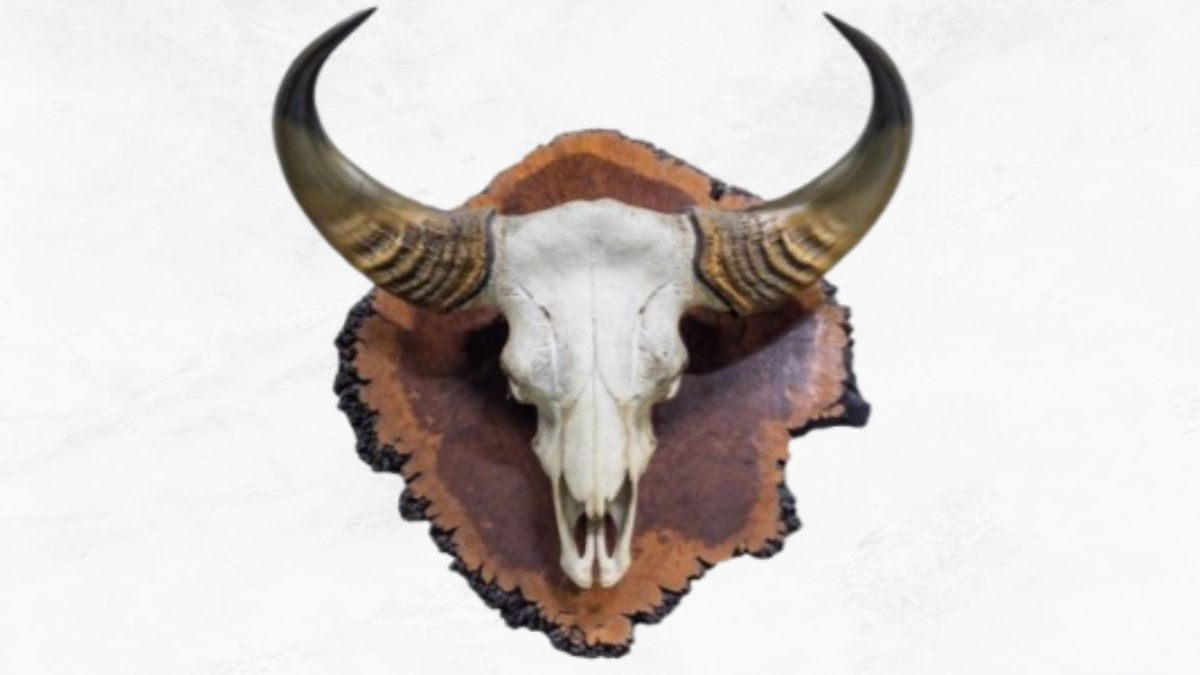The bison skull is an important cultural relic with deep historical roots in the American West. The bison skull has been used in a wide variety of cultural contexts, from Native American ceremonies to contemporary art and interior design. In this post, we’ll learn about the fascinating history, cultural meaning, and modern application of skulls.
Table of Contents
Historical Significance
The bison is a relic of early North American culture. Native American communities relied on it for millennia to provide their basic needs, including food, clothing, and shelter. The sturdy structure of the skull evolved to represent fortitude and perseverance in ancient societies.
Native American Culture
The bison skull has spiritual significance in Native American religion. As a symbol of oneness with the natural world and the rebirth of life, it is frequently included into religious rites and rituals. The elaborate patterns etched into the skulls convey messages of solidarity and respect for nature as well as the will to live.
Symbolism in Modern Art
Many well-known painters have found motivation in skulls for their work. Its distinctive appearance and lengthy background have inspired artists to depict it in paintings, sculptures, and other forms. The bison is often used in art to symbolize strength, the American frontier, and other weighty concepts.
Interior Design
The bison appeal extends to the realm of interior decoration, where it makes for a fascinating showpiece. The skull, whether as a decorative item or a focal point, adds a touch of wild beauty to every room it inhabits.
Ethical Considerations
As the price of bison skulls continues to grow, ethical questions have been raised about the practice of harvesting them. Protecting the bison herd and making sure these cultural objects come from ethical sources both depend on conservation initiatives.
Preserving Bison Skulls
The integrity of bison skulls relies heavily on preservation methods. These relics will be preserved for future generations via careful cleaning, treatment, and exhibition.
Educational Tools
Skulls of bison are extremely useful for teaching students about the biology and anatomy of these impressive animals. They’re a practical way to study the natural history of the Americas and get insight into the past.
Popular Culture
The skull has become a cultural symbol, appearing in movies, books, and even songs. The American West has had a profound effect on popular culture, and its presence here serves as a reminder of that.
Fashion
The bison skull is a well-known design motif, appearing on everything from apparel and accessories to shoes and jewelry. Because of its cultural importance and raw beauty, it is frequently used in modern architecture and interior design.
Conclusion
The bison skull, with its deep cultural roots and fascinating past, never ceases to pique curiosity. It is a symbol of the continuing spirit of the American West, from its revered place in Native American rituals to its impact on contemporary art and design.
FAQs
Can I legally possess a skull?
Yes, although there might be restrictions based on where you live. Do your homework on the rules and regulations in your area.
Are there ethical sources for acquiring skulls?
Yes, there are legitimate businesses and groups that lawfully acquire skulls and use the proceeds to fund preservation initiatives.
How can I preserve a skull?
To keep your bison in mint condition, you may get it cleaned and preserved by experts.
Are there alternative materials that mimic the appearance of skulls?
If you’re looking to replicate this look but don’t want to use a real bison, you have synthetic alternatives.
Where can I find skull-inspired fashion and accessories?
You may get a wide variety of clothing with a skull design at several specialty stores and on the web. Moreover, artisan marketplaces may have one-of-a-kind handmade items.









